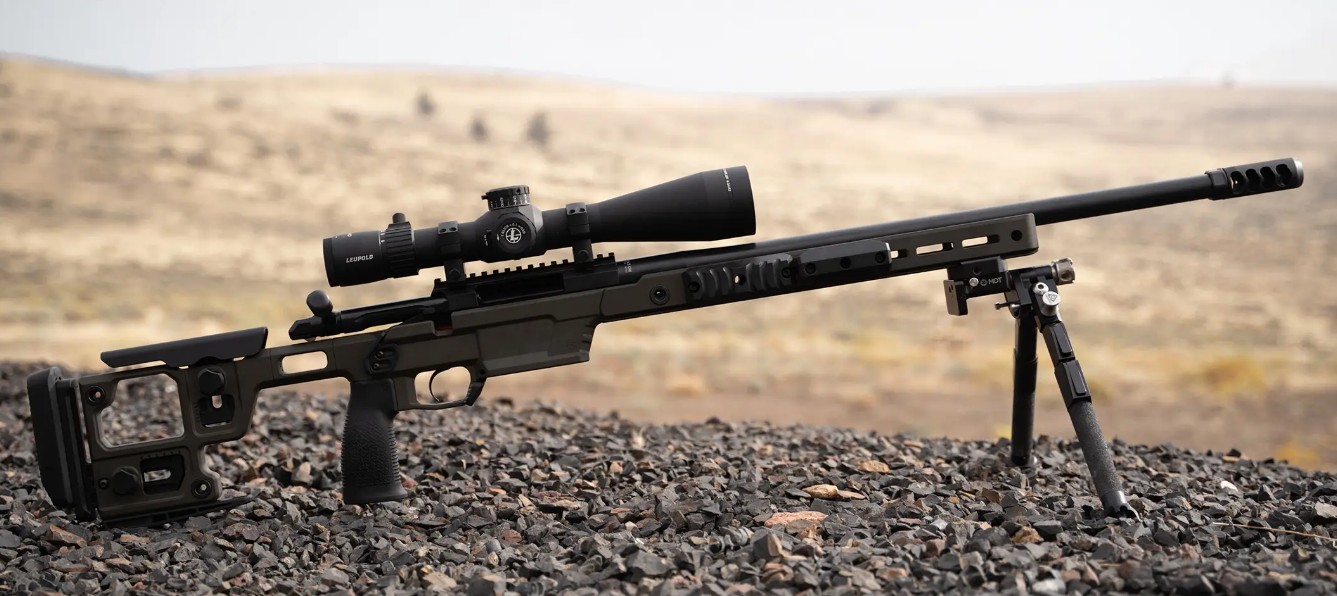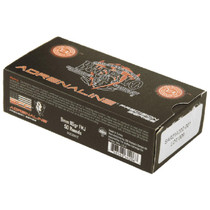Teaching an Old Dog, New Tricks: Leupold Mark 4HD
Posted by Cory Ross on Jan 15th 2024

I fell in love with Long-Range Shooting in High School after reading Charles Henderson’s Marine Sniper: 93 Confirmed Kills. In this book, Henderson depicts the life and service of legendary Marine Sniper, Carlos Hathcock. Through the depictions of his achievements, both in the Jungles of Vietnam and on the firing line at Camp Perry, my passion for precision flourished. I’ve read that book countless times and any book I could on sniping and precision shooting. In the early 2000s, most of those books covered the Vietnam War.
During this period, precision rifles were more of a myth. They existed, but only in legend. If an enthusiast wanted to purchase an accurate rifle, they either had to shell out an exorbitant amount of cash to one of a handful of renowned custom builders, or buy a “varmint” style rifle, adorned with a heavy barrel flimsy stock from someone like Remington or Savage. The pickings were slim. Worse than the rifle options—optic selections. Today, we are spoiled in the quality of optics available. Even just ten years ago it was unfathomable to think of affording an optic that offers the features we take for granted today. However, there was one Gold Standard.
The Leupold Mark 4
The Mark 4 was Leupold’s top-shelf option in a precision rifle scope. It has seen use around the world with different militaries and special operations groups. In the United States military apparatus, it saw use on the M24 (Army Sniper System), M107 (Barret .50 BMG), MK12 Special Purpose Rifle (SPR), MK14 Enhanced Battle Rifle (that cool M14 from Call of Duty), M110 (Knight’s Armament SR-25-based rifle), M2010 (updated M24 and chambered in 300 Win Mag), and much more. The optic was born out of necessity to bring a purpose-built optic to the United States Military. Better yet, Leupold offered variants of this line to the commercial market.
The Mark 4 LR/T 4.5-14X50 was the first optic I purchased for long-range shooting. I had it on a Kimber 8400 Tactical chambered in 308. With it, I was able to make my first hits on steel at 1000 yards—what a rush. I’ve since used several variants of the Mark 4 on a range of rifles. But as long-range shooting blossomed and more people flocked to the sport, manufacturers took notice. Firearms companies began building and curating rifles for dynamic-style events like the Precision Rifle Series (PRS). That was quickly followed by Optics companies doing the same thing. Soon, the Mark 4 series was obsolete. Most of the Mark 4s offerings were in the second focal plane (SFP) and still used a mixed system of MOA turrets and Mil-based reticles. Instead of updating the line, Leupold Optics decided to remove it from commercial sales.
The Mark 4 left a void in Leupold’s product lineup that, on several occasions, they attempted to fill. Lines like the Mark AR, VX-3i LRP, and the newer Mark 3HD have had hardly the success of the impactful Mark 4. Even the popular Mark 5HD line can’t overcome the ghost of optics past.
But that has changed.
A New Era: The Mark 4HD
After a nearly five-year hiatus, the famed Mark 4 is back—kind of. The new scope line pays homage to its namesake but adds all the modern advancements in the optics industry. Dubbed the Mark 4HD, it uses technology and engineering found in the more expensive Mark 5HD line and brings it down to a more affordable price point. In several videos put out by Leupold, they say the Mark 4HD is 90% of the Mark 5. If this is true, then the new line is an exceptional value.

One of the biggest updates is an expansion of the magnification ranges to be on par with the competition. This includes 1-4.5X24, 2.5-10X42, 4.5-18X52, 6-24X52, and an 8-32X56. The 1-4.5 and 2.5-10 options come with 30mm maintubes while the higher magnification options are 34mm. One thing that caught my eye about the 4.5-18 and 6-24 is they possess 36 MILs (125 MOA) of elevation travel. That’s a ton of travel, especially compared to the competition, and makes them feasible for Extreme Long Range (ELR) events (at least the 6-24, that is).
All have various reticle and illumination options. Leupold has also introduced a new reticle—the PR3. This reticle gives the same subtend measurements on the vertical and horizontal axis as the PR2 but without the extra gridded design. This gives an unobtrusive picture.
Another standard is the inclusion of the Zero Lock turret. This is like the one found on the Mark 5HD series but with a few updates. First, the M5C3 has oversized numbers so they are easier to see and reference. Next, they offer three revolutions (30 MILs) of travel and a hard stop for return-to-zero, as well as ½ MIL travel past zero for any corrections. Also, the Zero Lock turret can be found on the windage dial as well (the Mark 5 line uses a capped windage turret). The illumination has Leupold’s Motion Sensor Technology (MST) and several models include an electronic reticle level that blinks when the optic is canted.
Finally, the price. The Mark 4HD series starts at $999.99 and tops out at $1599.99 for the 8-32 option. As mentioned before this is a lot of value for an optic that is comparable to the Mark 5HD on a lot of levels (For context, that line starts at $1999.99 and goes to $3299.99).

Final Thoughts
I’m excited that Leupold is bringing back the Mark 4 series. While the line isn’t a carbon copy of the previous iteration, it provides a lot of updates to make it competitive in the current precision rifle landscape. (My hope is Leupold offers some legacy variants of the classic line for those looking to build clones of military rifles). The Mark 4HD will be an excellent option for PRS and NRL, tactical and LEO use, long-range target shooting, hunting, or really any type of shooting that requires a quality and purpose-built optic. The Leupold Mark 4HD will be hitting dealer shelves soon.













